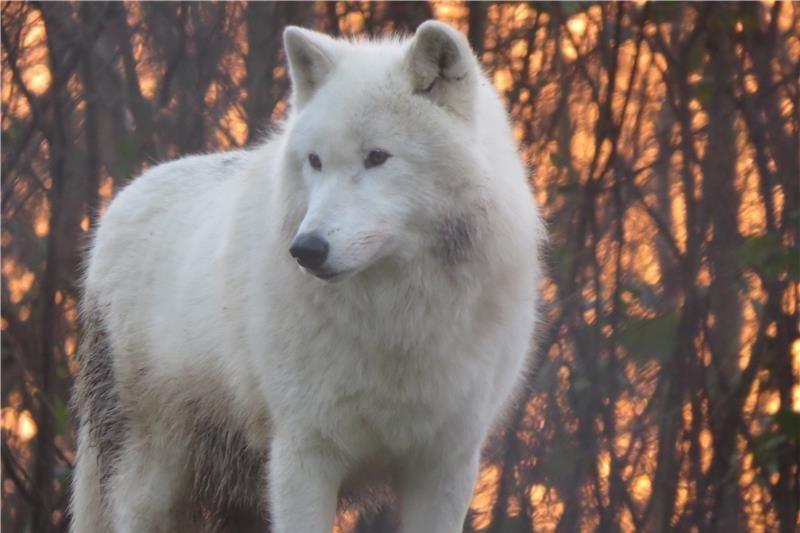Researchers think the evolutionary origins of human language lie in the vocalizations of highly social species like the arctic wolf. Photo by Arik Kershenbaum
CAMBRIDGE, England, Feb. 9 (UPI) -- Genetically or taxonomically speaking, wolves aren't all that closely related to humans, but they organize and behave like people, and researchers believe the evolutionary origins of language may be hiding in their howls.
"Ecologically their behavior in a social structure is remarkably close to that of humans," Arik Kershenbaum, a scientist from the University of Cambridge, explained in a news release. "That's why we domesticated dogs -- they are very similar to us."
Kershenbaum served as the lead researcher on a project to analyze the howls of wolves. Using machine learning, a team of Cambridge scientists analyzed 2,000 individual howls. Computer algorithms organized the howls by pitch and fluctuation, grouping the 2,000 vocalizations into 21 types.
The analysis linked the varying frequencies of the 21 howl types -- from flat to highly modulated -- to different species, subspecies and populations, suggesting the howls of wolves resemble human dialects.
Researchers published their findings in the journal Behavioural Processes.
Most of the identified dialects are distinct, but several share similarities. Researchers believe the likeness of red wolf and coyote howls may explain their propensity for interbreeding.
"The survival of red wolves in the wild is threatened by interbreeding with coyotes, and we found that the howling behavior of the two species is very similar," Kershenbaum said. "This may be one reason why they are so likely to mate with each other, and perhaps we can take advantage of the subtle differences in howling behavior we have now discovered to keep the populations apart."
The new research is limited by its strictly mathematical approach. Researchers acknowledge that they don't know exactly what the dialects mean or how they're employed in the wild. Wolves are very difficult to monitor in their natural habitat.
"We are currently working on research in Yellowstone National Park in the U.S. using multiple recording devices and triangulation technology to try and pick up howl sounds and location," Kershenbaum explained. "In this way we might be able to tell whether certain calls relate to distance communication or pack warnings, for example."
Kershenbaum is confident the secrets to the development of human language lies in the calls of social species like wolves in dolphins. He points out that when a dolphin whistle is slowed by a factor of 30, it sounds almost identical to the howl of a wolf.















